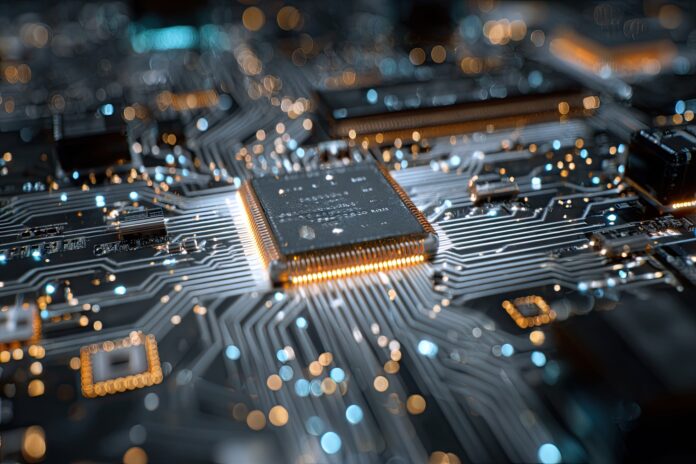How Physics is Accelerating AI Evolution
AI optimization is at the heart of today’s brightest technological innovations. As AI models grow smarter and the world expects faster, more efficient results, tech leaders are looking to a perhaps unexpected source for breakthroughs: physics. The principles that govern the universe—energy, movement, quantum states—also have the power to supercharge artificial intelligence and change its future trajectory.
Physics-Inspired Algorithms: Rethinking the Core of AI
Artificial intelligence learns by exploring possibilities, adapting, and finding patterns. Most importantly, AI researchers have long borrowed methodologies from physics to help algorithms solve problems quickly and efficiently. Simulated annealing stands out as a prime example. Inspired by the cooling process in metallurgy, simulated annealing allows AI to avoid getting stuck in suboptimal solutions. By introducing controlled randomness, algorithms can “jump” over hurdles, achieving better outcomes. This technique, once a staple in physical sciences, now fuels optimization in AI projects and has found success in everything from scheduling airline routes to optimizing complex neural networks.
Another leap ahead comes from quantum-inspired algorithms. These borrow concepts from quantum mechanics, like superposition and entanglement, to allow AI models to search for solutions across many possibilities at once. Because of this, optimization tasks that used to take hours or even days can potentially be solved in seconds. Real-world research by IBM, D-Wave, and Google has already shown that these quantum-inspired algorithms deliver practical speedups in areas like portfolio optimization and drug discovery.
Energy Efficiency: Lessons from Thermodynamics and Beyond
Besides discovering faster paths to solutions, AI optimization owes its growth to energy efficiency principles from thermodynamics. Today’s AI models are notoriously power-hungry. Therefore, engineers are turning to physical laws to build smarter, greener AI. For instance, the brain’s structure inspires neuromorphic computing, a field that attempts to mimic biological neurons and synapses. These neuromorphic processors use materials and designs rooted in physics to transmit information more efficiently and with far lower energy consumption than traditional chips.
Analog computing represents an old idea made new by modern physics. Rather than encoding information in ones and zeros, analog computers calculate using voltages or other continuous physical phenomena. This method can speed up certain AI operations—especially in vision, robotics, and natural language processing—while consuming less power. The result is AI systems that are both faster and more sustainable, a win-win for innovation and the environment.
Quantum Computing: The Next Leap for AI Optimization
The rise of quantum computing is arguably the most exciting chapter yet in the story of AI optimization. Quantum computers operate using qubits that can represent multiple states at once, following the fundamental rules of quantum mechanics. As a result, when AI models take advantage of quantum hardware, they can process and analyze vast, complex datasets with remarkable efficiency. Tasks that seem impossible for classical computers—like simulating new materials atom by atom or solving advanced cryptographic puzzles—are suddenly within reach.
Researchers at Google and IBM have demonstrated real-world quantum advantage for specific optimization problems. These early milestones indicate that quantum-powered AI will dramatically change industries from logistics and finance to medicine and cybersecurity. While scalable quantum computers are still years away from mass deployment, hybrid approaches—where classical and quantum machines work together—are already helping solve intractable problems at record speeds.
Neuromorphic Chips: Where Physics Meets Brain-Inspired AI
Another frontier in AI optimization lies in neuromorphic engineering, where the architecture of microchips mimics the human brain’s neural pathways. This revolutionary hardware, constructed using insights from materials science and electronics, runs AI tasks at lightning speed with minimal energy requirements. These chips process information in parallel, just like neurons, drastically reducing the latency and power typical of conventional processors.
Chipmakers like Intel, IBM, and BrainChip are integrating physics-based materials and neuromorphic design into their products. Therefore, these new chips promise to accelerate pattern recognition, sensory processing, and learning-on-the-fly—capabilities crucial for future smart devices and autonomous systems. As the line between organic and artificial intelligence blurs, it is undeniable that physics-based hardware will fuel the next wave of AI breakthroughs.
Hybrid Approaches: The Real Power Behind AI Optimization
It’s important to recognize that AI optimization rarely relies on just one technology. The magic happens when different physics principles merge. For example, new research fuses quantum-inspired algorithms with neuromorphic chips, multiplying the speed and efficiency gains offered by each concept alone. Similarly, advances in photonics—using light for computing—are showing potential to further slash computation times and energy use. According to a recent Scientific American report, the intersection of these fields could supercharge AI architectures, affecting everything from real-time translation to scientific discovery.
Applications on the Horizon: From Healthcare to Space
Because of their combined potential, these advancements are not just theoretical. Smart robotics, self-driving vehicles, personalized medicine, and climate science all stand to benefit. For instance, AI-optimized drug discovery platforms—as flagged in Forbes—can analyze millions of compounds in days, thanks to physics-inspired algorithms. In aerospace, real-time optimization of spacecraft navigation becomes feasible as quantum and neuromorphic techniques mature. Most importantly, these developments promise not just improvements in efficiency, but also fresh solutions to humanity’s biggest challenges.
Looking Ahead: Physics as AI’s Secret Weapon
AI optimization, fueled by physics, is setting the stage for a smarter and more efficient technological future. As engineers draw deeper from physical sciences—quantum mechanics, thermodynamics, and brain-inspired hardware—we will see systems that learn faster, operate greener, and solve problems both old and new. Staying ahead in this race means welcoming interdisciplinary collaboration and keeping an eye on science itself for inspiration.
This is just the beginning. The fusion of AI and physics is not a passing trend, but rather a foundational shift. With every breakthrough, we inch closer to AI that can think, learn, and adapt at the speed of the physical world.



